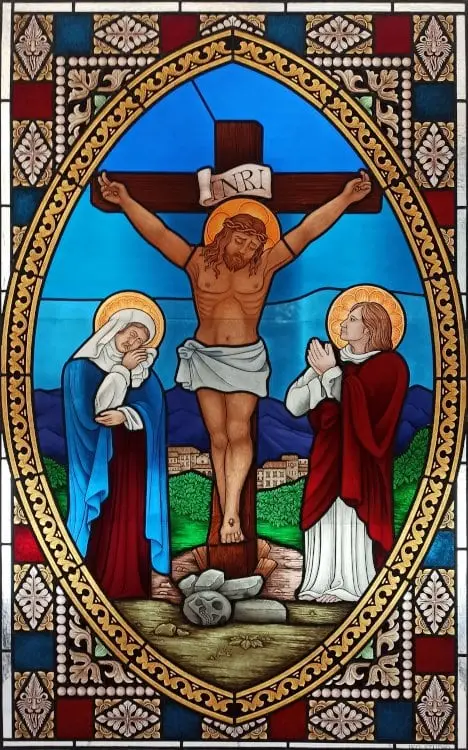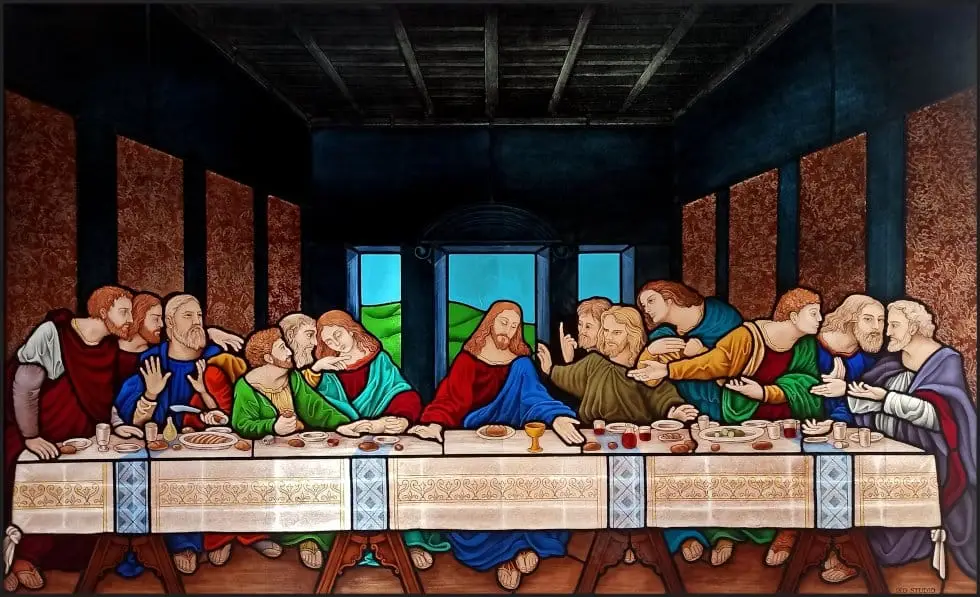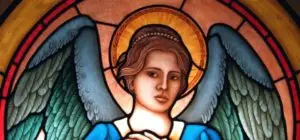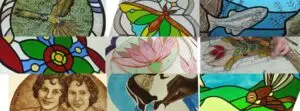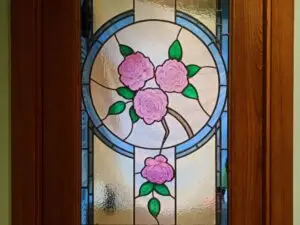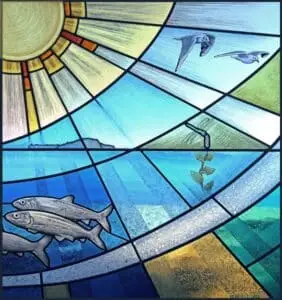Sacred stained Glass for a Church in Africa
At the beginning of the year, we took on a project to design and create a series of sacred stained glass windows for a church in Rwanda, Africa. The process began with a contact from the United States, which led to a series of detailed emails outlining the complexity of the project and setting out the steps ahead.
The Creative Process
The subjects and designs for the sacred stained glass windows were provided by the client, but translating the designs from images and ideas to this media and the sizes we were working to, required the freedom to adapt and interpret the brief as needed. Our commissioning partner trusted in our expertise to do this sensitively.
The windows were mostly uniform in size—about 1 meter wide and 2 meters high—except for one that was placed horizontally.
In addition to crafting the stained glass artworks, we were responsible for their installation within double glazing made from thick laminated glass. Special attention was needed for packaging, given the multiple stages of shipping and the challenges posed by distance, weight, and the bureaucratic procedures required for exporting these sacred works.
Drawing from our years of experience working with churches across the African continent, we know that meticulous planning is essential to minimize delays and avoid complications.
Mary Immaculate
The first window portrays Mary Immaculate in a classic representation: standing on a globe, with her foot crushing the head of a serpent, symbolizing triumph over sin and evil. This sacred image, deeply rooted in Christian tradition, signifies redemption through Mary’s purity and divine grace. The globe represents the world, while the serpent, often associated with original sin, is defeated beneath her, symbolizing her power over evil. Blue is the dominant color, reflecting Mary’s purity and royal status.
Stylistically, this window is distinct for its modern approach. Unlike the other commissioned works, the design here is minimalist, with clean lines and simplified details. This simplicity enhances the emotional impact, allowing natural light to filter through and create a deeply spiritual atmosphere in the church.
Divine Mercy
The second piece recreates the renowned painting by Eugeniusz Kazimirowski, The Divine Mercy inspired by the visions of St. Maria Faustina Kowalska. It depicts Sister Faustina’s vision of Christ appearing with his right hand raised in blessing and his left touching his chest, from which two rays of light emerge. During this vision, Jesus instructed her to have the image painted, accompanied by the inscription, “Jesus, I trust in You.”
Since the Divine Mercy stained glass window was intended for a Rwandan church, we translated the inscription to “Yezu ndakwizera” to make the message accessible to the local community. In our sacred stained glass, Jesus is framed by clouds in varying shades of blue that open gently behind him, adding depth and a sense of divine presence. His halo is composed of rays made with transparent yellow enamel, blended with blue grisaille to give the piece a bright, sacred quality.
The Crowned Virgin
This sacred stained glass window shows the Madonna kneeling in an atmosphere of deep reverence and calm. Her hands are clasped in prayer as she rests on a bed of soft, vaporous clouds, crafted from mouth-blown glass in shades of grey and blue, evoking lightness and transcendence. The clouds seem to lift her toward the sky, reflecting her intimate connection to the divine.
Mary wears a deep blue mantle over a pink robe shaded with an orange grisaille, while a pure white veil covers her head. A modern-style halo adorned with radiant beams surrounds her, symbolizing divine grace and protection. Completing the image, a finely painted gold crown decorated with pearls, rubies, and emeralds sits at the center of the halo.
The Crucifixion
The Crucifixion design was based on an image provided by the client of a small medieval sacred stained glass panel. The central scene is enclosed in a gilded almond-shaped frame, a common motif in medieval art. Gothic-style ornaments decorate the lower part of the window, featuring refined details characteristic of sacred art from the period. At the corners are four small stylized faces with tongues out, adding a touch of medieval humor.
In the center, Christ’s figure is depicted with a solemn, rigid posture and idealized proportions, typical of the era’s artistic style. On either side of the cross, Mary and John appear in similarly stylized forms—Mary with her head bowed in sorrow, and John with hands joined in prayer, accompanying Christ in his sacrifice. The background features a medieval landscape with a church nestled at the base of a mountain range, hinting at the spread of Christianity.
The Last Supper: Leonardo’s masterpiece
The most challenging work was a sacred stained glass adaptation of Leonardo da Vinci’s “The Last Supper.” This project presented significant challenges due to the original painting’s complexity and the technical difficulties of translating it into glass. The small size of our version—just over two meters wide compared to Leonardo’s nearly nine-meter-wide original—added to the challenge, requiring intricate cuts and the use of tiny glass pieces, which had to be precisely shaped and fitted.
Some sections of the original painting have deteriorated over time, necessitating careful interpretation. We referred to a 1520 copy by Giovanni Antonio Boltraffio, housed at Magdalene College in Oxford, to help reconstruct lost details. Our research is systematic and thorough, ensuring that each artistic decision is informed by historical context.
Other artists have created stained glass adaptations of “The Last Supper,” but none have matched the dimensions of our version. The Bernardini Fatti Museum in Sansepolcro displays a much larger 40-square-meter stained glass window made in 1924 by the Moretti Caselli studio, showcasing the grandeur of such works.
Reflections on the Project
When a commission is looking to include historically important elements or recreating historically significant paintings, we don’t spare on research. As Italians, the history of art is in our DNA and the importance of balancing the unique features stained glass presents as a media requires in-depth knowledge and extensive experience. We always strive to create works that meet our clients hopes as well as expectations.
Creating these sacred stained glass windows for a church in Rwanda was a profound experience for our studio. The project brought us closer to a country marked by a painful history, including the 1994 genocide—a tragedy that left deep scars on humanity. Knowing that our artworks will provide a space of peace and reflection for a community facing ongoing challenges made this project especially meaningful.
We hope these works will offer a place of solace and congregation, bringing light and spiritual comfort to all who enter.
If you enjoyed our sacred stained glass windows for a church in Africa, learn more about IKO Studio’s religious stained glass windows, works that bring beauty and spirituality to places of worship around the world.




